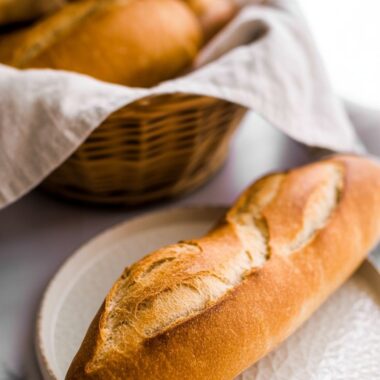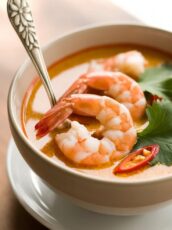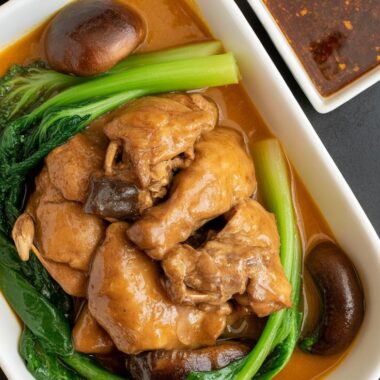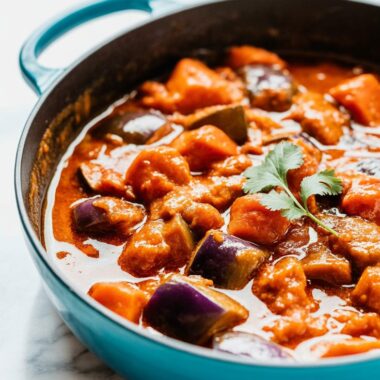Tom Yum Soup has been a favorite in my kitchen for years—especially during those evenings when I’m craving something tangy, spicy, and soul-soothing. Whether you’re making the classic clear broth version or going for the richer creamy style, this Thai soup delivers bold flavor without much fuss. Once you get your hands on the right ingredients, it all comes together pretty quickly—and yes, it’s surprisingly light and healthy!

Let’s walk through how I make this at home, plus a few tips I’ve picked up from trial, error, and many cozy bowls of soup on rainy nights.
Two Versions, One Delicious Bowl
There are two popular ways to enjoy Tom Yum:
- Clear Tom Yum (Tom Yum Goong Nam Sai)
- Creamy Tom Yum (Tom Yum Goong Nam Khon)
Both versions start with the same deeply aromatic broth, packed with lemongrass, kaffir lime leaves, galangal, and chilies. The creamy one gets a little twist with Thai chili paste and evaporated milk stirred in toward the end. Some people substitute coconut milk for the creamier base—and that variation edges toward Tom Kha, another comforting Thai classic.
I honestly can’t pick a favorite. If I’m in the mood for something sharp and fiery, I go for the clear broth. But when I want something a bit richer and cozier, I love adding that creamy swirl.
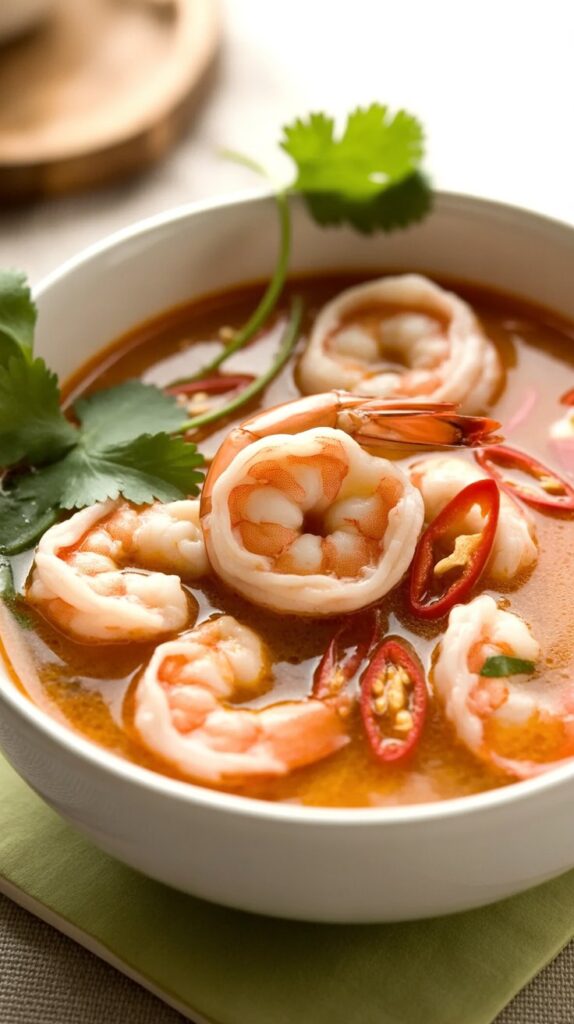
What Makes Tom Yum Different from Tom Kha?
This one’s a question I’ve been asked more than once when I serve this soup to friends. The main difference is in the finish—Tom Yum has a clearer, punchier broth, while Tom Kha includes coconut milk for a creamier, slightly sweeter result.
Think of Tom Yum as the zesty, citrus-forward cousin, and Tom Kha as the mellow, velvety one. Both are incredibly good—just depends on the kind of comfort you’re after.
Ingredients That Bring the Magic
Tom Yum isn’t about complexity—it’s about the right ingredients doing their job. You don’t need a pantry full of sauces or seasoning blends. The magic lies in the aromatics.
Here’s what goes into that bold broth:
- Lemongrass – I give the stalks a good bash with the back of my knife to release their citrusy oils.
- Kaffir lime leaves – Tear them slightly to really wake up the fragrance.
- Galangal – It looks a bit like ginger, but don’t substitute it. The flavor is woodsy and sharper.
- Fresh Thai bird’s eye chilies – Adjust the heat to your taste.
- Garlic and shallots – For a bit of depth.
I usually peel my own prawns and use the heads and shells to flavor the broth. If you’re short on time, frozen peeled prawns still work just fine—just know you’ll lose a bit of that homemade seafood depth.
For the creamy version, I stir in:
- Thai chili paste (Nam Prik Pao) – Adds heat and umami.
- Evaporated milk – This softens the flavor and gives the soup its cloudy look.
Want a more natural, coconut twist? Sub in coconut milk and you’ll end up with something closer to Tom Kha.
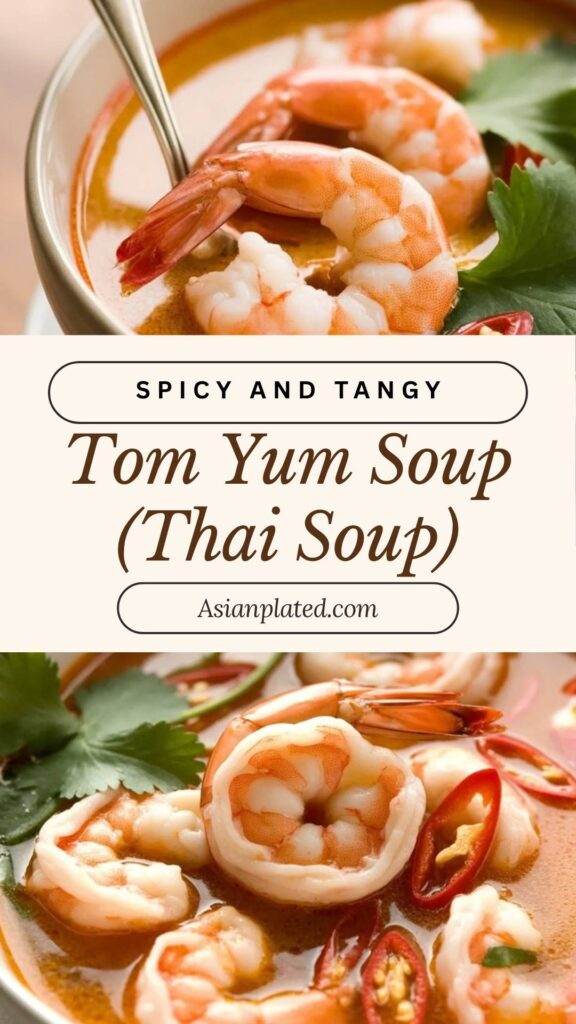
What Goes In the Soup Bowl
Aside from the broth, here’s what I usually toss into the pot:
- Fresh prawns or shrimp – Whole ones with heads if possible.
- Oyster or button mushrooms – I slice them thick so they stay nice and meaty.
- Tomatoes – I like cherry tomatoes halved, or big wedges of roma tomatoes.
- Fresh coriander – Right before serving.
- A squeeze of lime juice – Don’t skip this; it ties all the flavors together.
Sometimes I also toss in a few onion wedges or extra chilies if I’m feeling bold. Don’t be afraid to tweak—this is a flexible soup.
How I Make It (and Why It’s Easier Than It Looks)
The first time I made Tom Yum, I expected it to be complicated. Turns out, it’s mostly simmering aromatics and layering the flavors.
- Start with the broth – Add the shrimp shells, lemongrass, lime leaves, galangal, garlic, and chilies to a pot of water. Simmer gently to draw out the flavor.
- Strain – Once it smells like a Thai kitchen, strain out the solids. Now you’ve got your base.
- Add your soup ingredients – Toss in your mushrooms, tomatoes, and peeled shrimp. Let it simmer until the shrimp just curl up.
- Season to taste – Add fish sauce, lime juice, and if making it creamy, the chili paste and evaporated milk.
That’s it. It’s all about building the flavor step by step. On days when I’m short on time, I make the broth in advance and store it in the fridge. It only gets better overnight.
Tips That Make a Difference
- Don’t boil the shrimp too long – Overcooked shrimp are rubbery. As soon as they curl and turn pink, take the pot off the heat.
- Use fresh herbs if you can – The flavor is miles ahead of dried substitutes.
- Adjust to your heat tolerance – Start with fewer chilies. You can always add more.
- Strain the broth well – You want a clean, bright liquid base.
And honestly, if you can’t find every traditional ingredient, just do your best with what you have. The broth is forgiving if you get the key flavors right.
Can You Freeze It? Absolutely.
Here’s what I do:
I make a big batch of the broth, strain it, then freeze it in jars. When I’m ready for a quick meal, I just reheat the broth, toss in some shrimp and veggies, and dinner’s on the table in minutes.
While you can freeze the soup with everything in it, I’ve found the mushrooms and tomatoes hold up better when added fresh.
Creamy Tom Yum—My Cozy-Weather Favorite
Whenever the weather dips below 20°C (yes, I’m a wimp), I go for the creamy version. After straining the broth, I stir in a heaping spoonful of Thai chili paste and just enough evaporated milk to cloud the broth.
It gives the soup a smooth, almost velvety body without masking the brightness of the herbs. And when I’m cooking for guests, this version always impresses.
How I Serve It at Home
At our place, Tom Yum is usually a light dinner all on its own—especially if I’ve added a few extra mushrooms and shrimp. But it also works beautifully as a starter if you’re doing a Thai-inspired meal.
Sometimes I serve it with a small bowl of jasmine rice on the side. My wife loves spooning the soup over the rice to soak it up—it’s like a mini rice bowl of flavor.
Frequently Asked Questions
Can I make it vegetarian?
Yes, you can! Use vegetable stock instead of the prawn broth, skip the shrimp, and load it up with mushrooms, tofu, and maybe bok choy. The aromatics will still give you tons of flavor.
What’s the best substitute for galangal?
Fresh galangal is ideal, but if you absolutely can’t find it, try frozen or even a little ginger. Just know the taste will be different—less citrusy and more warm-spiced.
Can I use chicken instead of shrimp?
Yes, thin slices of chicken breast or thigh work well, especially in the creamy version. Just make sure to simmer until they’re fully cooked.
Is it very spicy?
It depends how many chilies you use. Start small—you can always add heat, but you can’t take it away!
Tom Yum Soup (Thai Soup)
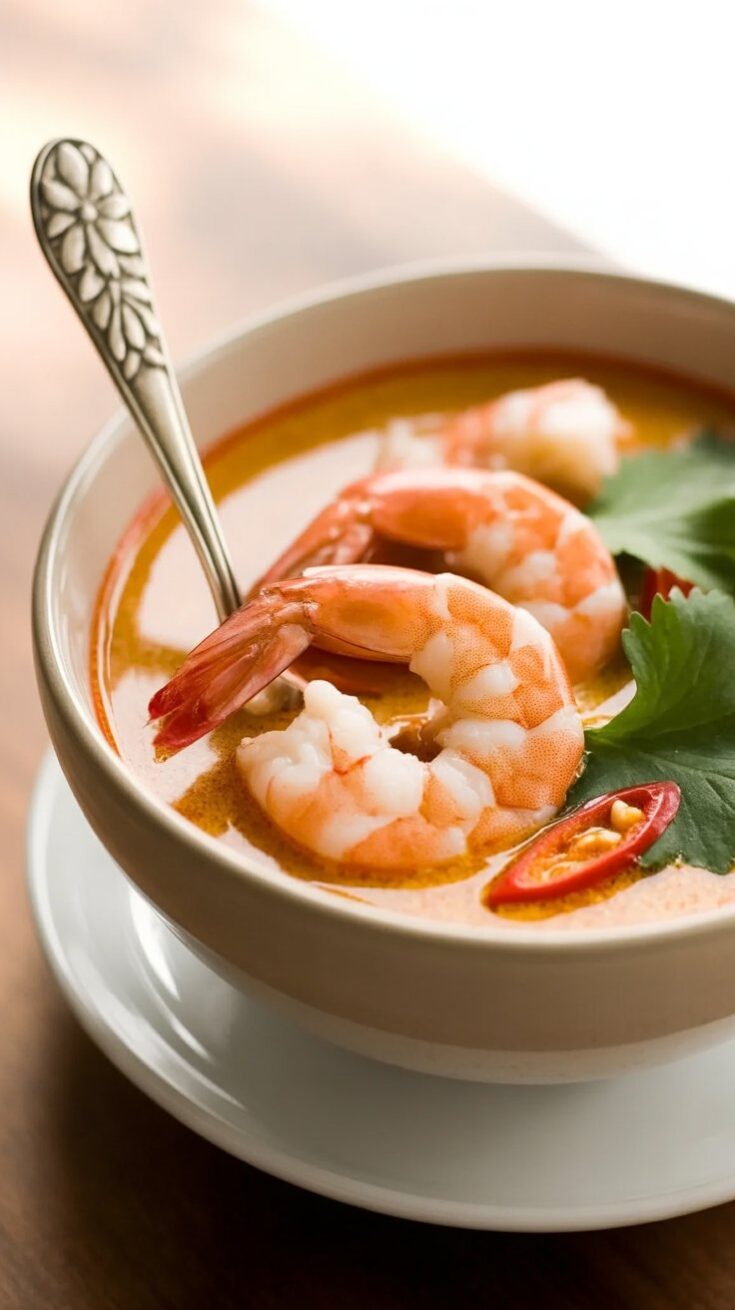
This homemade Tom Yum Soup brings all the bold, citrusy, and comforting flavors of Thailand straight into your kitchen.
Ingredients
For the broth:
- 3 cups water
- ½ cup low-sodium chicken stock
- 2 stalks lemongrass, bruised and halved
- 5 kaffir lime leaves, torn by hand
- 3 garlic cloves, crushed
- 2 Thai bird’s eye chilies, lightly smashed
- 1.5 cm piece galangal, sliced
For the soup:
- 300g whole prawns or shrimp (with shells and heads on)
- ½ medium white onion, cut into wedges
- 1 roma tomato, sliced into wedges
- 120g oyster mushrooms, roughly torn
- 3 tbsp fish sauce
- 3 tbsp fresh lime juice
- 1 tsp sugar
- Fresh coriander (cilantro), for garnish
Optional creamy version:
- 1½ tbsp Thai roasted chili paste (Nam Prik Pao)
- ⅓ cup evaporated milk
Instructions
- Start by peeling the prawns and setting the meat aside for later. Add the shells and heads to a pot to build a rich, flavorful broth.
- Using the back of a knife or a pestle, gently crush the lemongrass, garlic, and chilies to release their oils. Toss them into the pot along with the galangal, kaffir lime leaves, chicken stock, and water. Bring everything to a boil, then lower the heat and let it gently simmer, covered, for about 10 minutes.
- Strain the broth, discard the solids, and return the clear broth to the pot over low heat.
- Next, add the onion and mushrooms and let them cook for about 3 minutes. Drop in the tomato wedges and simmer for another minute. Add the reserved prawns and cook until they’re just pink and tender—around 2 minutes should do the trick.
- Now stir in the sugar and fish sauce. Let it simmer for another minute, then finish with a generous splash of lime juice. Taste the soup—adjust with more sugar, lime, or fish sauce until it hits that perfect balance of salty, sour, and sweet.
- If you're going for the creamy version, stir in the Thai chili paste and evaporated milk along with the sugar before you add the lime juice.
- Ladle the soup into bowls, garnish with fresh coriander, and serve hot. It’s perfect as a light meal or a vibrant starter!
Notes
- No fresh prawns? You can use frozen peeled shrimp—just skip the shell-based broth and instead stir 1½ tsp shrimp paste into the stock.
- For Tom Kha flavor: Swap evaporated milk with coconut milk.
- Storage: Keeps well in the fridge for 2 days. Just reheat gently and add prawns later to avoid overcooking. The broth also freezes beautifully—store separately and add fresh mushrooms, tomatoes, and lime when reheating.
- Lemongrass shortcut: If using paste, go with about 1 tbsp for similar aroma.
- Galangal vs Ginger: Can’t find galangal? Ginger with a touch of black pepper makes a fine stand-in.
Nutrition Information:
Yield: 2 Serving Size: 1Amount Per Serving: Calories: 436Total Fat: 9gSaturated Fat: 3gTrans Fat: 0gUnsaturated Fat: 5gCholesterol: 335mgSodium: 3919mgCarbohydrates: 48gFiber: 3gSugar: 16gProtein: 45g
Asianplated.com, occasionally offers nutritional information for recipes contained on this site. This information is provided as a courtesy and is an estimate only. This information comes from online calculators. Although allchickenrecipes.com attempts to provide accurate nutritional information, these figures are only estimates.
A Soup That Always Delivers
There’s something so satisfying about Tom Yum Soup. It’s bold, zesty, and comforting without being heavy. I’ve made it on lazy Sunday afternoons, for dinner parties, and even once during a power outage using a portable stove—and it always hits the spot.
If you’ve never tried making it at home, I promise it’s easier than it looks. And once you taste that homemade broth, you won’t go back to the takeout version.
Try other Thai recipes:


